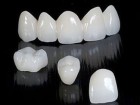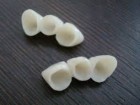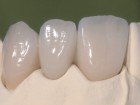Metal free ceramics
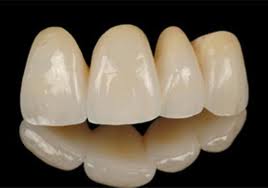
Metal-free ceramics is the most modern direction of dental prosthetics.
The technology for creating non-metal dental structures was developed at the end of the last century, but only now has gained the greatest popularity.
The patients' desire to have new teeth, which are almost indistinguishable from real ones, gave impetus to the development of aesthetic dentistry and forced specialists to turn to the creation of new prosthetics technologies.
The creation of dentures made of materials that do not contain a single gram of metal that perfectly connect the structures and tissues of a real tooth has increased the demand for non-metal ceramics.
Metal-free ceramics are hypoallergenic, completely harmless and highly aesthetic.
Where applicable
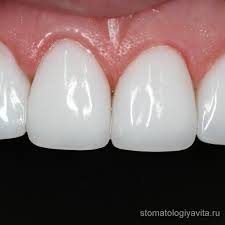
Non-metal ceramics is a material having a sufficiently high strength. Its high quality allows you to solve a wide range of problems, starting with small chips of tooth enamel and ending with the creation of an artificial tooth.
The use of non-metal ceramics in dentistry makes it possible to restore teeth in patients with an allergic reaction to metal.
If it is necessary to restore the color and shape of the front teeth, the installation of ceramic dental structures is the most rational solution to the problem.
Currently, the manufacture of prostheses from non-metal ceramics, both on the front and on the chewing teeth, is widely practiced.
Currently, ceramics is the only material that can absolutely accurately simulate the hard tissues of natural teeth and give them a vibrant, natural sheen.
Kinds
Ceramics can be classified by the following indicators:
- Chemical composition. The material for the manufacture of structures is porcelain or ceramics, the basis of which, most often is zirconia or alumina.
- Clinical use.
- Manufacturing technology.
The following types of structures are made of ceramic that does not contain metal:
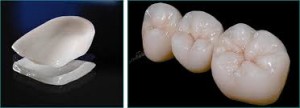
- Metal-free ceramic crowns.
- Veneers.
- Bridge prostheses.
- Tabs
- Laminates.
- Pin tabs.
Advantages
- Gives a natural look to the teeth.
- It can be installed on both front and chewing teeth.
- It does not cause allergies.
- It has high biological compatibility, does not irritate the gums.
- Durability, because it has high strength.
- Color fastness. Does not change color over time and does not stain.
- It is characterized by high thermal insulation properties, which allow you to fully enjoy the intake of hot or cold food.
- It does not oxidize and does not react with the tissues of the tooth and gums.
- The presence of a smooth surface of the material, which prevents the accumulation of plaque.
- Lack of a gray strip in the gum area.
- The presence of an ideal marginal fit, which reduces the risk of caries.
- High esthetics.
- The lightness of the design reduces the load on the abutment teeth.
- Teeth preparation is more gentle than using materials containing metal.
disadvantages
Non-metal ceramics has disadvantages associated with its rather high cost.
They are explained by the following reasons:
- The high cost of equipment used for computer simulation in the manufacture of metal-free structures.
- The use of expensive impression materials.
- The cost of consumables used in the manufacture of prostheses.
- High material costs for training personnel to work using modern technologies.
Indications
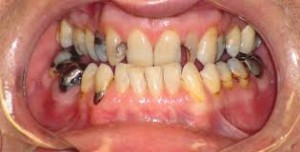
- Correction and restoration of teeth.
- Alignment of the dentition.
- The presence of multiple tooth defects.
- If the patient has an allergy to metal.
- Loss of teeth in the smile zone.
Contraindications
- The presence of a deep bite.
- Bruxism (gnashing of teeth).
- Weakened body.
- Severe osteoporosis.
- Inflammatory processes of the oral cavity.
- During pregnancy.
Methodologies
Metal-free ceramic crowns can be made by extrusion molding and porcelain layering.
No ceramic structure is universal. Between them there are significant differences in manufacturing technology.
Currently, the following methods are used to create crowns from non-metal ceramics:
- CAD / CAM technology (computer simulation).
- Press ceramics.
- Method of electroforming.
Zirconia or alumina is used as the framework in non-metal ceramics. There is almost no difference between them. However, before the introduction of computer technology, their application was impossible for a long time because of its high strength.
The CAD / CAM technique, using laser and mechanical scanning, makes it possible to manufacture the design of the future prosthesis frame more accurately and efficiently.
Video: “Zirconium dioxide. Metal-free ceramics "
Stages
Metal-free ceramics is a modern approach to dental prosthetics, which is done quickly enough (in 2 - 3 days).
Manufacturing stepsceramic non-metal structures:
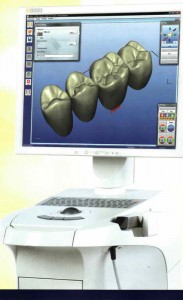
- Preparation of teeth for prosthetics: treatment, preparation.
- Obtaining an optical cast of the prepared tooth and antagonist teeth.
- Determining the color of the future design.
- Digital modeling of the framework of the future prosthesis.
- Turning the frame of the structure of zirconium dioxide on a milling machine.
- Application of ceramic mass to the frame. Kiln firing.
- Trying in the patient's oral cavity.
- Fixation of non-metal ceramics permanent cement.
Complications
After installing non-metal structures, some problems may arise:
- Color mismatch for real teeth.
- Poor marginal fit.
- Inaccurate creation of the anatomical shape of the tooth.
- Presence of soreness associated with mismatch in the size of the structure.
Complications can occur when the dental technician in the manufacture of prostheses focused only on the cast, without consulting a dentist.
With a competent approach, all these complications are easily avoided.
Life time
The service life of structures with proper operation is unlimited.
Usually, a non-metal ceramic structure is given a lifetime warranty.
Cost
Metal-free ceramics, prices, which today are quite high, is one of the most popular methods of dental prosthetics.
The cost of ceramic structures includes: material, the complexity of work, installation, the cost of consumables, depreciation of equipment, as well as the skill of a dentist and a dental technician.
Setting the exact cost can be final only after evaluating all the work performed.
| Type of construction made of non-metal ceramics | Price in rubles |
| Zirconium oxide crown | 15000 |
| Metalless crown Empress | 14000 |
| Porcelain crown | 13000 |
Metal-free ceramics before and after photos
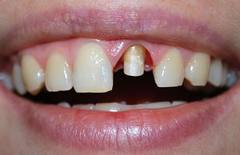 |
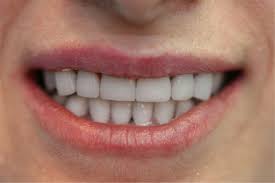 |
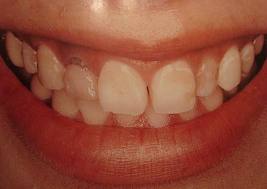 |
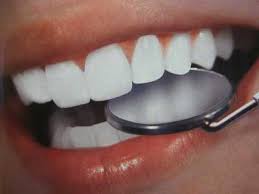 |
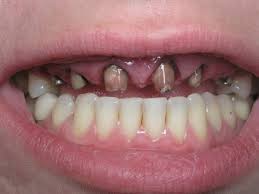 |
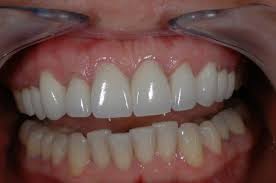 |

